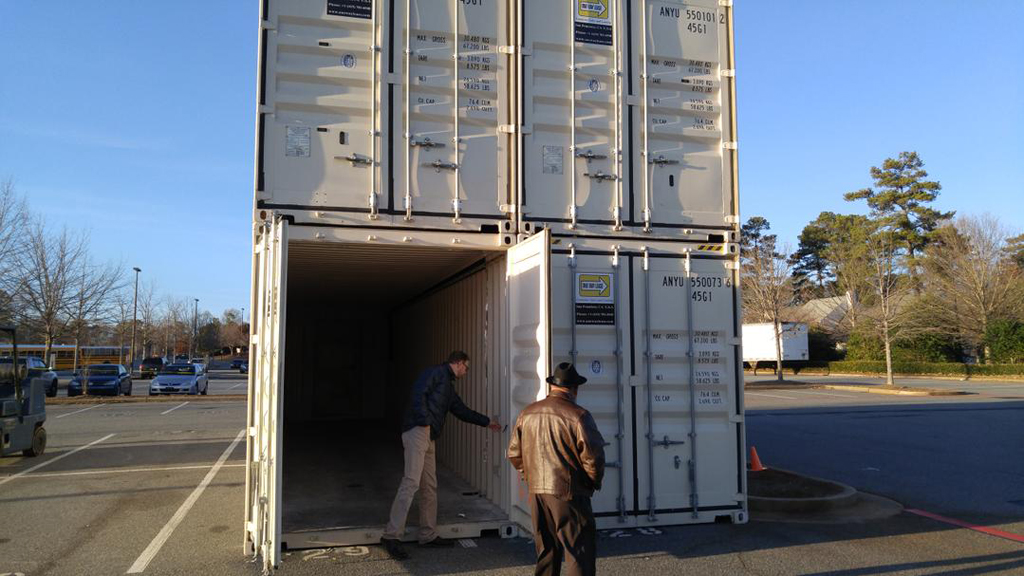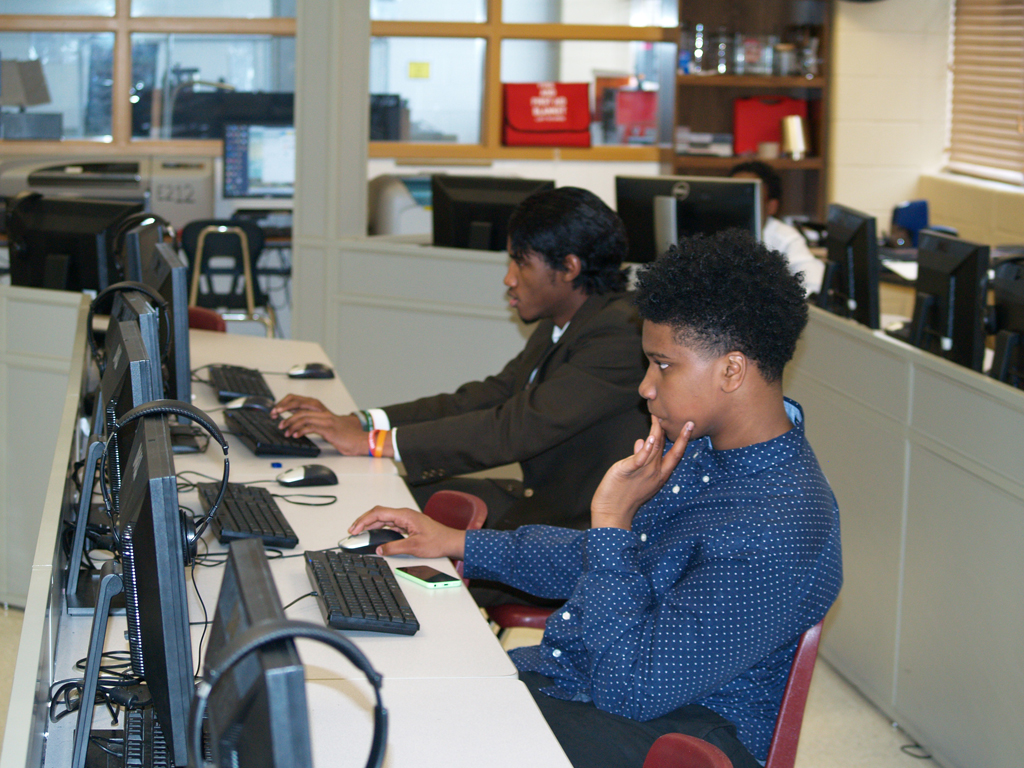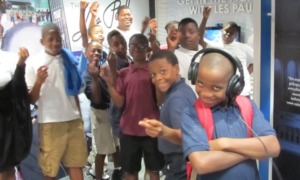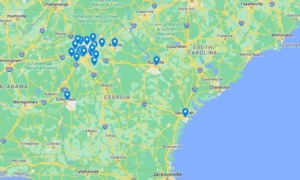Six empty shipping containers sit in the parking lot of Marietta High School in Marietta, Georgia.
Soon they’ll be set on a permanent foundation, and then over the course of this school year students, working during school and after school, will turn the 8-foot by 40-foot containers into a model for a community center in Haiti.
The school’s civil engineering club, pre-engineering classes and after-school design class will create features such as solar panels, a rainwater harvesting system, waste recycling system and furniture.
“I thought that if we give students the opportunity to feel they are really changing people’s lives” they would get excited, said Marcellus Pitts, an engineer who worked with teacher Leon Grant to start the project in 2014.

Marcellus Pitts
Shipping containers are stacked in the parking lot of Marietta High School in Marietta, Georgia. Students, working in class and after school, will design the systems needed to turn the containers into a structure for Plaine de L’Arbre, Haiti.
“That’s exactly what happened,” he said.
Pitts, CEO of the Atlanta community development consulting company Pitts-Fowler, started a civil engineering club at three high schools, including Marietta High.
He had also done work in Haiti and seen the needs of the country following the 2010 earthquake. He knew that shipping containers were readily available there.
Grant, who teaches pre-engineering and pre-architecture courses at Marietta High, had been thinking of having his students do design work involving containers.
The two men found common ground in the project, which both helps Haiti and helps educate future engineers.
“One student designed a chair that could convert into a bed,” Grant said. Other students figured out how 2-liter plastic bottles could be cut into pieces that could be fused together to create a plastic building material, he said.

Della Pitts
Marcellus Pitts, an engineer who worked with teacher Leon Grant to start the project in 2014, speaks with the youth project leadership team.
Resources for the project include Clinic in a Can, an organization that builds mobile medical clinics from shipping containers.
Grant offers an after-school design class two afternoons a week that students can take for school credit if they choose. Each student completes a design and builds it. Students are paired with engineering, architecture or other professionals who serve as their mentors.
“Students are taking concepts, designing them and building prototypes, refining those designs and eventually will ship them to Haiti,” Grant said in a video about the project.
Last year, senior Matteen Azari worked on a system for producing electricity for the structure using solar and wind energy.
His goal was “to provide enough power so that people in Haiti have a constant source of electricity,” Azari said in the video.
Tenth-grader Zion Martell worked on an aquaponics system that recycles water for cultivating both plants and fish.
Senior Jeffrey Hughes was the lead architectural designer last year, with the job of integrating the other students’ designs into his larger design.
The off-the grid structure is intended to meet a stated need in Plaine de L’Arbre, Haiti, for a community and training center where visiting teachers can hold classes.
The designs will be taken to Haiti while the structure remains at the school, serving as a kind of innovation laboratory, known as EARLS (Engineering and Architecture Research Laboratory for Sustainability).

Marcellus Pitts
Two of the students who were project leaders work on research and development.
Marietta Monaghan, architecture lecturer at Kennesaw State University, is among the professionals who mentor the students.
“The EARLS lab is intended to become a resource for the community,” she said.
Pitts believes in having students do “live projects” rather than replicate designs.
“I want a creative environment where young people can utilize [the math and science] they learn,” he said. “After-school was the anchor piece,” he said. Then Grant integrated the project into his classes.
“We have a shortage of engineers,” Pitts said. Students going into college to study engineering are often unprepared for the reality of college engineering classes, he said.
“The industry has to get involved in education to develop young people,” he said.
































